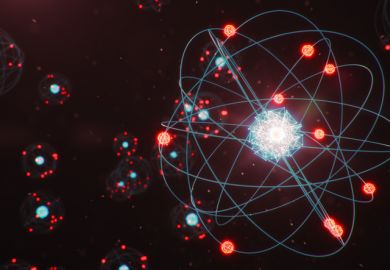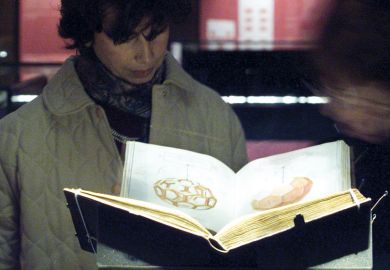The knots that this book discusses have no connection with the knots of everyday life used for tying things up; such knots are tied and then pulled tight leaving two or more loose ends; about 1,000 of them are described in The Ashley Book of Knots, for instance. The knot as understood by topologists and described in this book is a closed loop of string having any number of twists and tangles in it which cannot be removed without cutting the string. The number of these knots is enormous and each knot can be projected on to paper in a very large number of different ways.
This book describes the many ingenious methods which have been invented over the past 100 years to catalogue them and to find out which knot a particular projection represents. Until recently the subject was pursued purely for its mathematical interest as a branch of topology since one would never come across such a knot in real life. However, the discovery of the helical structure of DNA has led biologists to become interested in knot theory to help unravel these extremely complicated molecules. Chemists are now synthesising knotted molecules and the theory can help them find out whether such a molecule is "handed", like amino-acids are, or whether its mirror images are in fact two views of the same molecule.
This book is intended to be read by people with no knowledge of knot theory or any other branch of topology and it can be understood without much ordinary maths either. It is very clearly and informally written without unnecessary jargon, so it is possible to understand most of it, though some does need a great deal of concentration as the concepts are so unfamiliar to common sense.
The string really represents a line which is infinitely extensible and of zero thickness. To get some idea of the enormous range of possible knots, start drawing a curve on a piece of paper allowing it to cross itself in any way, any number of times, finally ending up at the beginning, thus making a closed loop. This is one of the knots dealt with in this book. Each knot can of course be projected on to paper in many ways; the first job is to tell whether two projections represent the same knot or if they are in fact just a plain loop, the "unknot", or trivial knot. The first exercises involve answering this question either by drawing the projection and modifying it without altering any of the crossings, or by making the knot with a piece of string and pulling it about. (I found an erasable memo board useful for the drawing, and a large cork tile and drawing pins for the tying.) The author then introduces various notations for knots which have been invented, going back over 100 years. This has allowed knots to be tabulated and counted. As an example, the least number of crossings needed to make any knot is three. With six crossings you can make three knots. The 49 knots with nine crossings are all illustrated in the book. Beyond that, with 13 crossings there are 9,988 knots and the number of knots with 14 crossings is still unknown. An example of the complexity of the problem is the "Perko Pair". A table of 43 knots of a particular type with ten crossings was published in 1899 after six years of work, but it was not until 1974 that two of these knots were discovered to be in fact the same knot. A drawing of them is given in the book and an exercise is to make one of them up and pull it about until it becomes the other one.
This is an example of how the author takes the reader with him. In fact many of his conclusions are left to be discovered by the reader doing the exercises. There are many examples of conjectures which, though almost certainly true, have yet to be proved. One such apparently obvious question is: if an object looks like a ball and behaves like a ball (topologically), is it a ball? This has not yet been formally proved. What properties of a knot remain the same regardless of the way the knot is projected on to paper? Even the simplest knot can be drawn in many different ways which can be made as complicated as you like, but the knot itself has a definite minimum number of crossings and the smallest number of these which have to be changed to reduce the knot to a plain loop, the unknot, is known as the unknotting number.
Surfaces can be related to knots. The simplest example is the fact that the unknot is the boundary of a disk or a hemisphere (the same thing topologically). But how do you construct a surface which has a given knot as its boundary? There are various types of knot, one example being a knot which lies wholly on the surface of a torus without any crossings occurring on its surface. Another is the alternating knot which has a projection which alternates between over and under as one travels round it. There are many others with more complicated properties.
The knot polynomial is one of the most successful ways of telling knots apart. The first of them appeared in about 1928 and many different ones have been introduced since then. The idea is to be able to calculate the value of one of these polynomials for any knot such that the value is the same for any projection of that knot. A lot of work appears to be going on at the present time searching for ever better and more reliable polynomials. The author shows in great detail how to make up one of these polynomials and calculate its value for a simple knot.
The rest of the book deals with more general topology. I think many people might find the last part of the book more difficult, though the author does a very good job at explaining it. The "complement" of the knot, for instance, is what is left when you remove the knot - a space with a wormhole drilled out of it where the knot used to be. The author finally finishes up with higher dimensional knotting. So perhaps I could do worse than end with a quotation from the last sentence in the book: "Exercise 10.11. Draw a knotted four-sphere in six-space. On that note we will call it quits . . . Have fun!" R. W. Sutton is one of the pioneers of radar.
The Knot Book:: An Elementary Introduction to the Mathematical Theory of Knots
Author - Colin C. Adams
ISBN - 0 7167 2393
Publisher - W. H. Freeman
Price - £23.95
Pages - 306pp



